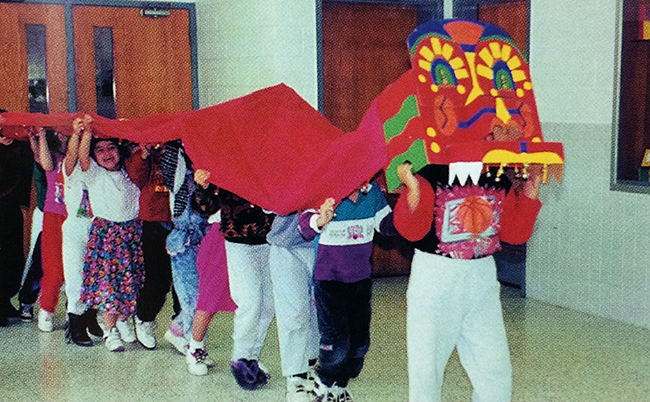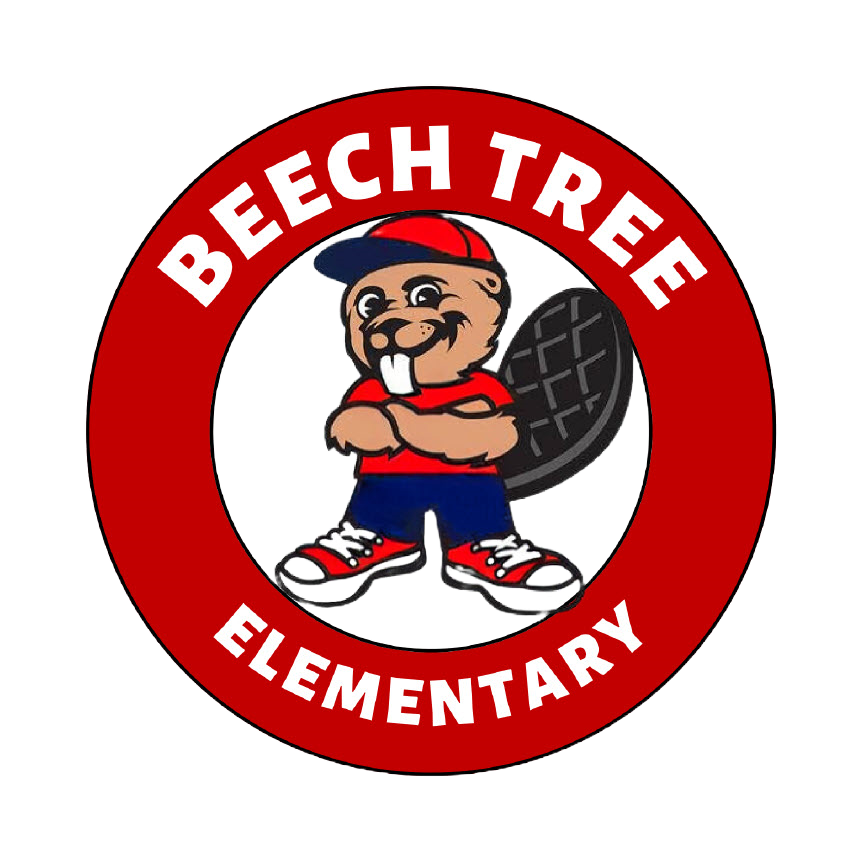School History: Our Building
Beech Tree Elementary School opened on September 3, 1968. Our school was designed by the architecture firm of Pickett, Siess, and Hook of Falls Church, Virginia, and was built by W. Bradley Tyree, Inc., at a cost of $597,463. 1968 was an exciting year for Fairfax County Public Schools (FCPS). It was the first year that kindergarten was adopted in all schools, and nine new schools opened.
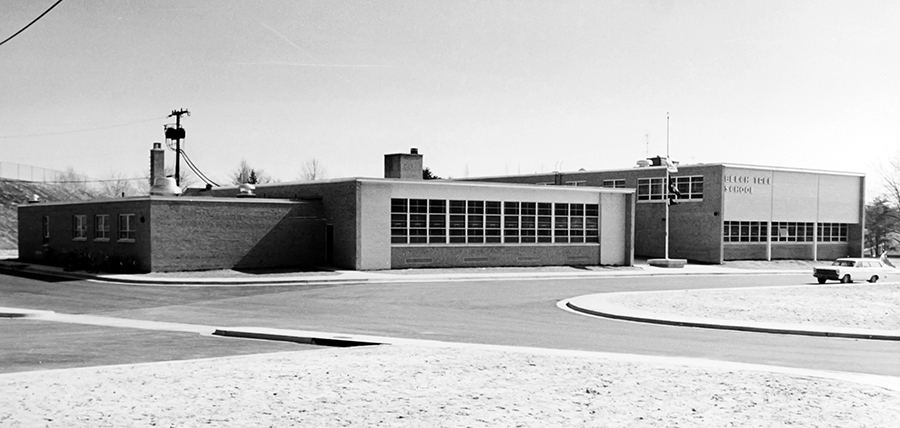
Renovations and Additions
Like most Fairfax County elementary schools constructed in the 1960s, Beech Tree was built without a gymnasium, music room, and air conditioning. Prior to 1984, physical education was taught in classrooms on the first floor, and music was taught in a classroom located on the second floor at the rear of the building. The original library was located upstairs at the front of our building above the main office.
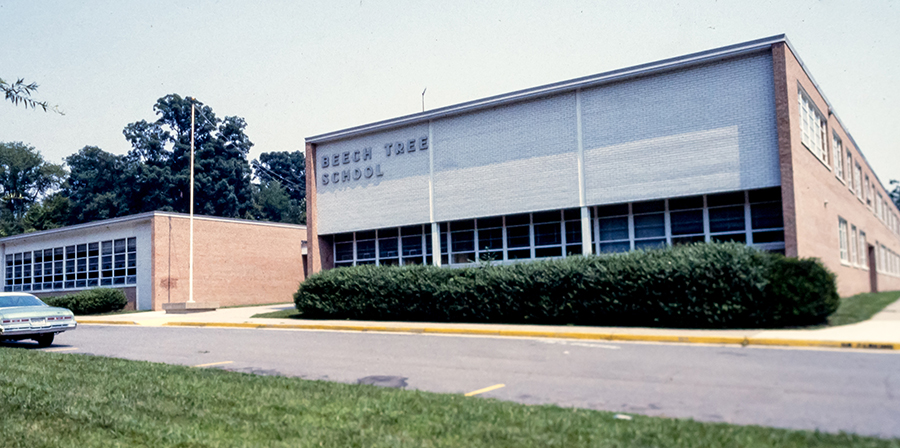
In January 1984, construction began on Beech Tree’s first renewal and addition. Our gymnasium and a music classroom were constructed at this time. The new building wing was designed by the architecture firm of Arthur Cotton Moore Associates, and was built by H. Manny Holtz, Inc., at a cost of $906,210.
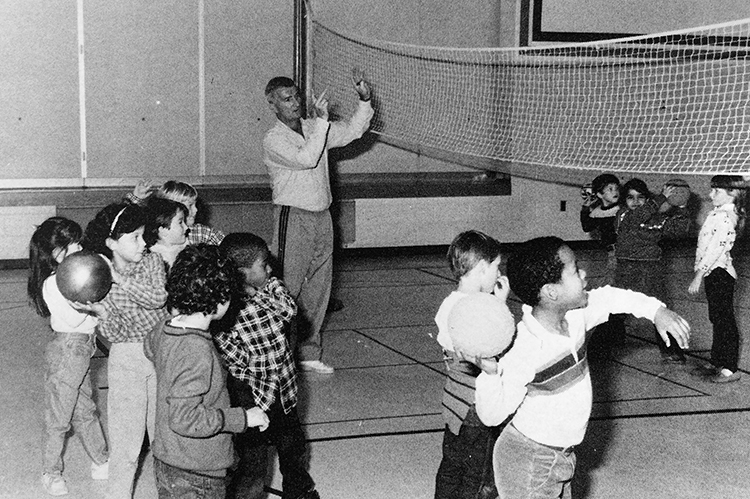
Beech Tree was one of 14 elementary schools to receive funding from the 1988 school bond referendum for the installation of air conditioning throughout our building. This amenity was added in 1990, much to the delight of students and teachers.

Our second renovation began construction during the summer of 2010 and was completed in February 2012. This extensive $8.3 million school-wide renewal transformed our building into the beautiful, state-of-the-art facility we cherish today.
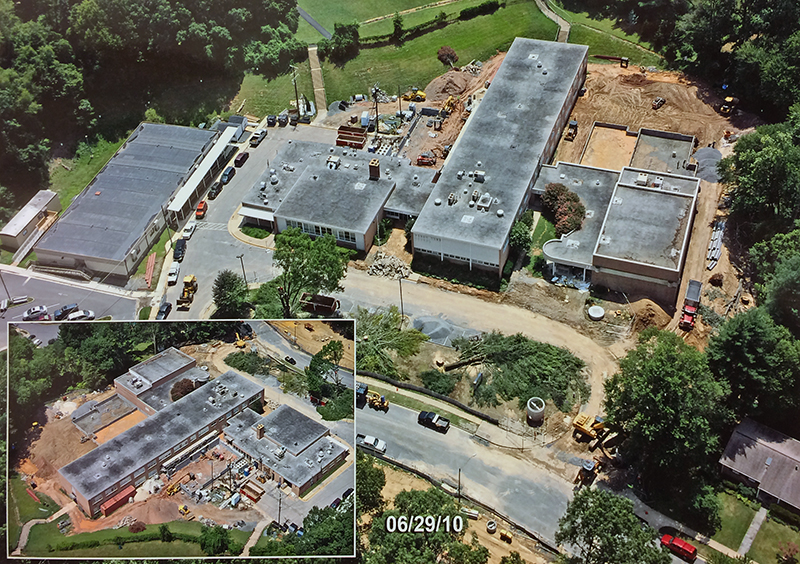
During the renovation, new classrooms were added, the library was relocated, and a new main entrance was constructed.
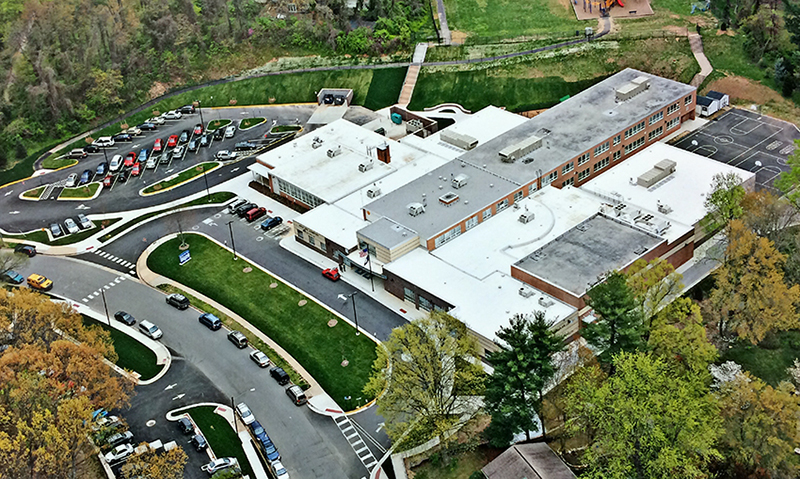
Reshaping Boundaries
Since its opening, Beech Tree’s attendance area has been adjusted several times, most notably in 1974, 1980, and 1991. From the mid-1970s into the early 1980s, student enrollment began a gradual decline resulting in the closure of several schools in the eastern part of Fairfax County. The closures affected neighborhoods that saw the earliest growth post-World War II. The children in these neighborhoods were graduating high school, and there were fewer families in the area with young children.
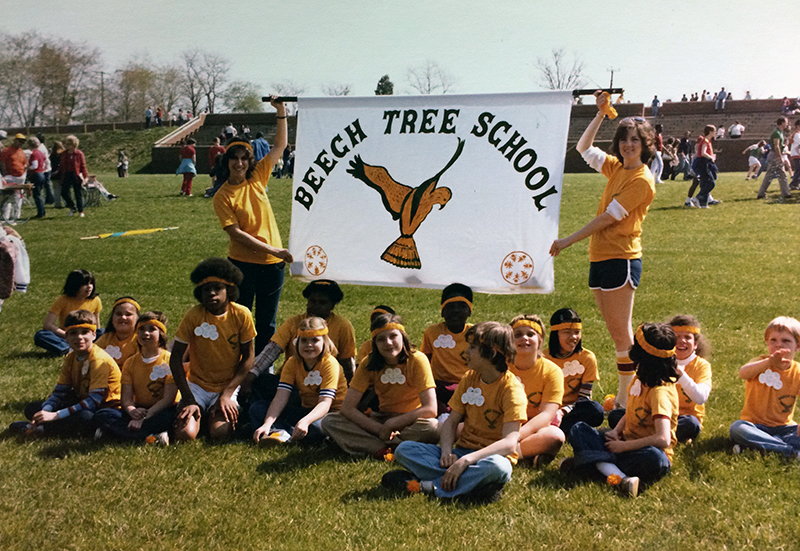
The closing of Willston Elementary School in 1974 resulted in the area north of Route 50, from Annandale Road to Seven Corners, being reassigned to Beech Tree. 432 children were enrolled at Beech Tree in September 1975, but by the end of the decade our enrollment bottomed out at 295 children.
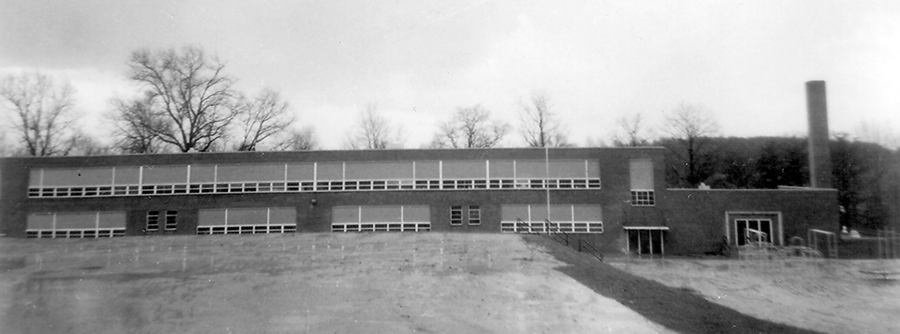
Masonville Elementary School’s closing in 1980 led to Beech Tree receiving children from Masonville Heights, Broyhill Crest, and the surrounding areas. Enrollment rebounded in September 1980 to 426 children and gradually tapered off to 360 children by 1985.
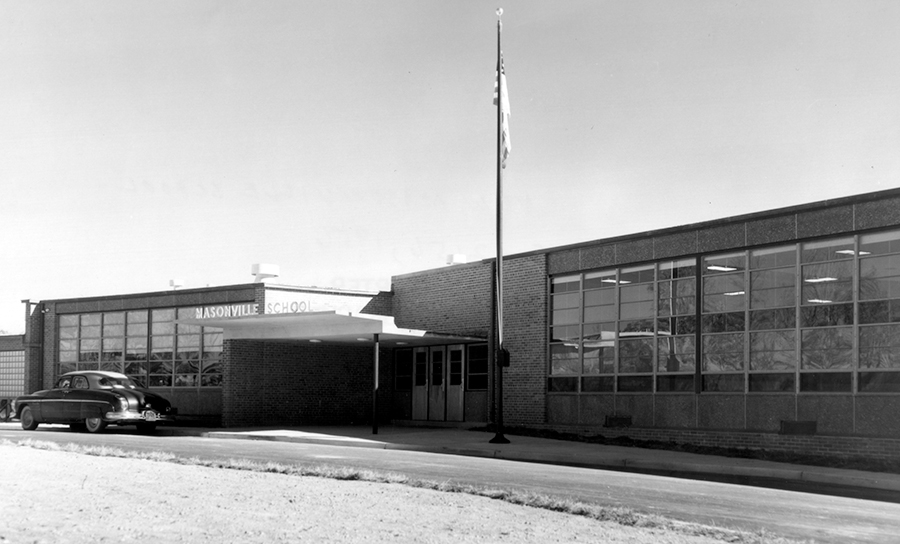
In 1991, a portion of the Willston Apartments was reassigned to Beech Tree, to relieve serious overcrowding at Sleepy Hollow Elementary School. Enrollment swelled from 499 pupils in 1996, to 544 children in 2000.
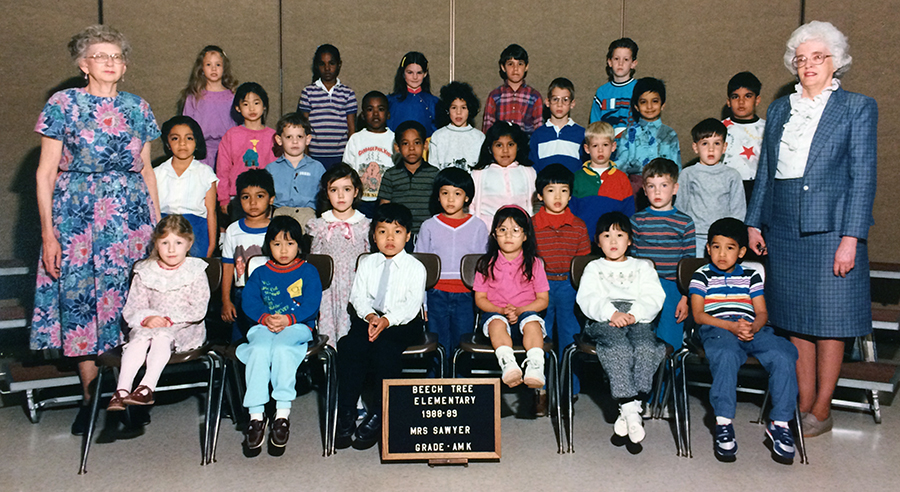
Preschool and Cued Speech
The FECEP / Head Start program at Beech Tree Elementary School began during the 2003-04 school year. However, this was not the first time preschool-aged children were enrolled at our school. From the late 1970s through the late 1980s, a Cued Speech program for preschool and elementary-aged children was housed at Beech Tree. Cued Speech is a visual method of communication used with and among deaf or hard-of-hearing people.

In 1980, Beech Tree was one of several schools in our area studied for possible closure. Parents lobbied the School Board to remove Beech Tree from the study because our school’s Cued Speech program.
Our hearing-impaired children have made remarkable progress since starting with Cued Speech. A great deal of the credit and success is due in no small part to the hard work and dedication of the teachers, administrators, and normal hearing children. Closing the school would have a severely negative impact… and set back the progress of our children from one to three years.~Jackie Berry, Cued Speech Association
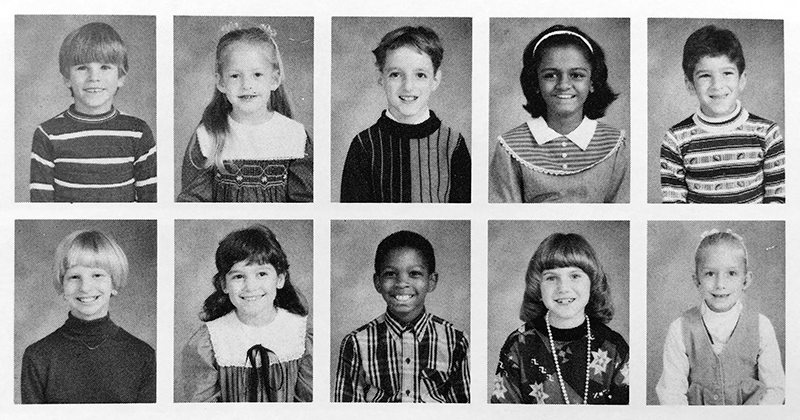
A Sixth Grade
Today, sixth graders from our attendance area go to Glasgow Middle School, but during the first two decades of our history these students attended school at Beech Tree. Prior to the founding of the first intermediate schools in 1960, elementary school consisted of grades 1-7. Intermediate schools were created to specifically target the needs of children in grades 7 and 8. However, by the late 1980s, FCPS administrators began studying whether or not to restructure middle schools to grades 6-8. It was decided to phase in the change, beginning with Glasgow, Holmes, and Poe middle schools, however the restructuring never expanded beyond these three schools. The 1990-91 school year was the last time sixth graders attended Beech Tree Elementary School.
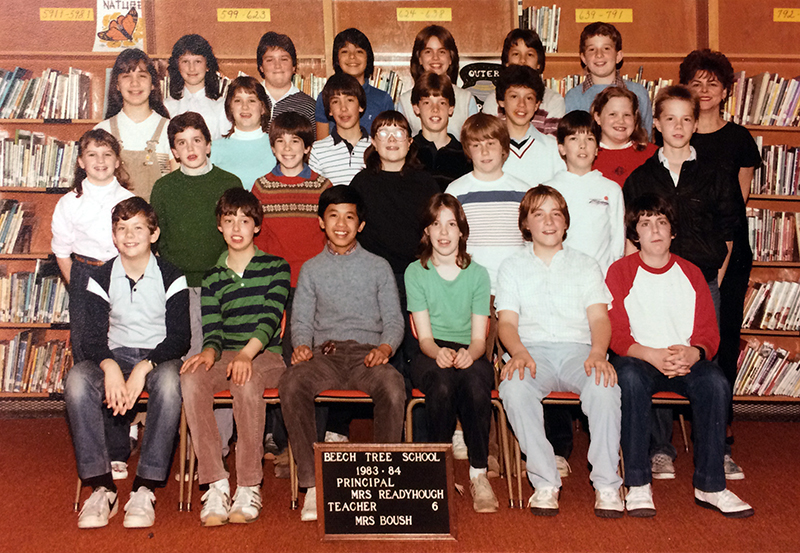
School Spirit
Extracurricular and co-curricular activities and clubs have been an important part of student life at Beech Tree since the founding of our school. SCA, Safety Patrol, Band, and Chorus have been around since the earliest days. During the 1990s, students could join the Peer Mediators, Welcome Team, or contribute to “Leaves of Gold.” In the 2000s, Girls on the Run, Odyssey of the Mind, and the News Team were immensely popular.
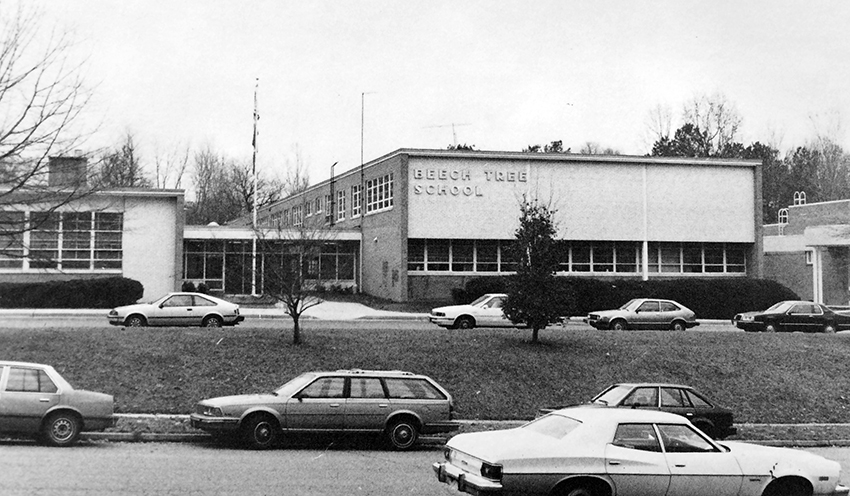
International Night
The cultural and ethnic diversity we cherish in Fairfax County Public Schools developed slowly from the 1970s to the 2000s. In 1975, FCPS inaugurated the English as a Second Language (ESL) program serving 275 children, most of whom were refugees from Vietnam. From 1983 to 1993, the number of students receiving ESL services grew from 3,000 to 7,000, with the largest language groups being Vietnamese, Korean, and Hispanic, in that order. In the early 2000s, ESL was renamed English for Speakers of Other Languages (ESOL), and by 2008 the number of students served by the program had grown to more than 21,750.
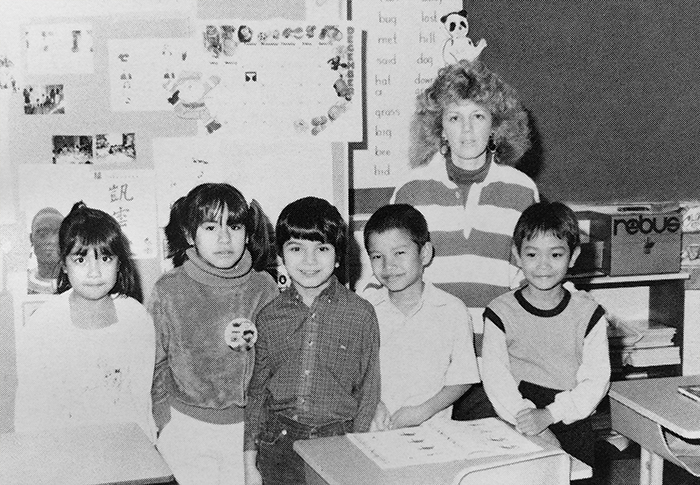
In 1995, there were 112 students at Beech Tree receiving ESL services. One of our favorite annual traditions, International Night, resulted from this diversification of our student body. International Night evolved from 1990s-era celebrations such as the International Dinner and Chinese New Year festivities.
